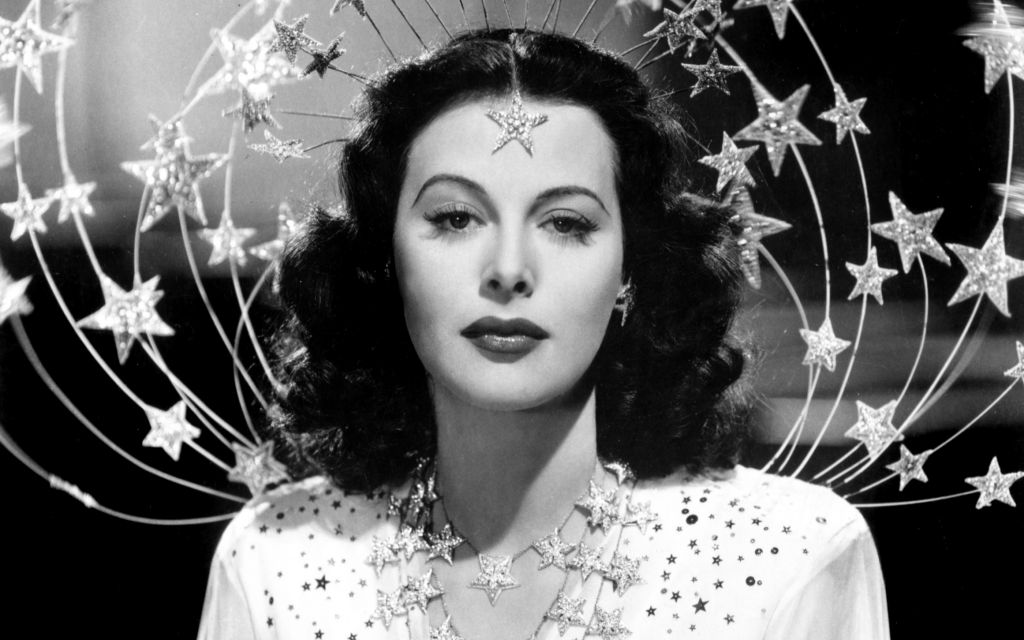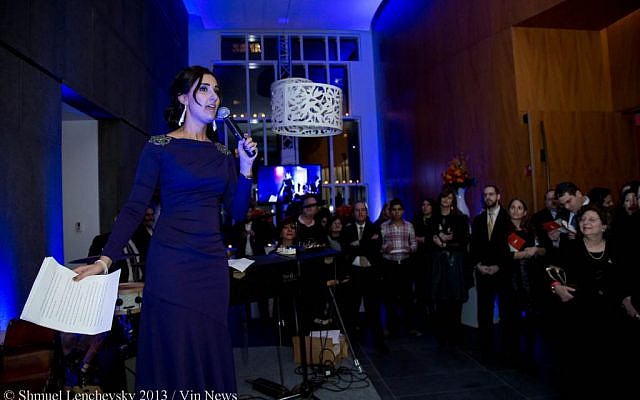
Film museum to add exhibit on Hollywood’s historic Jews – but why were they omitted?
JTA – A new museum about the history of Hollywood will have a permanent exhibition devoted to the contributions of Jews after early criticism that Jews were omitted.
The change was announced this week in the lead-up to this year’s Academy Awards, which features a slate of nominees more diverse than in the past. It caps a period of intense discussion about how Hollywood includes Jews — and how it does not.
Whether in their depictions on screen, the actors cast to play them or acknowledgment of their historic role building up the film industry, Jews over the last few months have been vocal about their impressions of being left out of the current Hollywood conversation.
The Academy Museum of Motion Pictures, which opened last fall in Los Angeles, is exhibit A in this purported oversight. Overseen by the Oscars’ governing body, which described its mission as “radically inclusive,” the museum’s announcement of its new permanent exhibition focused on Jews came only after the academy admitted it had initially sidelined or ignored Hollywood’s prominent Jewish founders.
Jewish visitors to its unveiling, including prominent donors to the museum, such as Haim Saban, publicly voiced their concerns that Jewish stories were being overlooked in the industry’s historical narrative.
Among the figures who had little or no prominence in the museum’s storytelling were Jewish studio heads like Louis B. Mayer and the Warner brothers; prominent directors like Billy Wilder and Ernst Lubitsch; stars like Hedy Lamarr; and screenwriters like Herman Mankiewicz (subject of the recent biopic “Mank,” which starred non-Jew Gary Oldman).
Figures such as these molded the early years of Hollywood, even while all but hiding their Jewishness from the general public, according to historians of the era such as Neal Gabler, whose book “An Empire Of Their Own” explores the central Jewish role in the creation of Hollywood.
These early Jews’ films rarely, if ever, dealt with Jewish characters and themes. “Gentleman’s Agreement,” a landmark 1947 film about antisemitism, neither starred nor was directed or produced by Jews (though co-writer Moss Hart and Laura Z. Hobson, whose novel the film was based on, were Jewish). Some of these showbiz legends were refugees from Europe, and their backgrounds of escaping (and continuing to operate under) extreme antisemitism informed their desire to keep their Judaism under wraps.
The Academy’s initial omission of such Jewish figures, and their self-imposed cultural erasure, stood out in stark contrast to the museum’s emphasis on people of color and women in early Hollywood. One anonymous insider told The Hollywood Reporter the exclusion was a symptom of “overcorrection due to wokeness.”

The exterior of the Academy Museum of Motion Pictures, September 21, 2021, in Los Angeles. (Photo by Richard Shotwell/Invision/AP, File)
Criticism of the museum arrived in the middle of other ongoing conversations about Jewish representation in modern Hollywood. Jewish actress Sarah Silverman recently popularized the controversial term “Jewface,” previously used by academics to describe secular Jews dressing up like Hasidic ones in Yiddish theater, to describe a different phenomenon: non-Jewish actors playing Jewish roles, in popular works such as “The Marvelous Mrs. Maisel” and the Ruth Bader Ginsburg biopic “On The Basis of Sex.” An upcoming biopic of Israeli Prime Minister Golda Meir, scheduled for release this year, casts non-Jew Helen Mirren in the role.
Just this week, an anonymous Oscar voter interviewed by The Hollywood Reporter questioned whether Rachel Zegler, the Colombian-Polish star of Steven Spielberg’s “West Side Story” remake, is diverse enough for the role, based solely on her name.
“I know they’re emphasizing that they cast Latino and Latina actors this time, but the actress who plays Maria is named Rachel Zegler, so I think that’s a little overstated,” the Academy member said, as their justification for not voting for the film — in what could be interpreted as an insinuation that Zegler is Jewish and therefore does not count as diverse. Zegler is Latina and not Jewish.
Allison Josephs, a writer and activist who runs the Orthodox-focused media organization Jew In The City, says how Jews are portrayed onscreen has real implications for how they are treated in real life.

Allison Josephs speaks at a Jew in the City event in Manhattan, November 24, 2013. (photo credit: Shmuel Lenchevsky/Vin News)
“Jews aren’t considered a minority in Hollywood. We’re considered white,” Josephs told the Jewish Telegraphic Agency, adding that depictions of Orthodox Jews in particular are “two-dimensional.” Her writing on such negative portrayals has prompted apologies and episode retractions from major producers.
This week, Josephs announced that Jew in the City would be opening a “Hollywood bureau,” intended to be a Jewish parallel to the NAACP, the Muslim Public Affairs Council and the Coalition of Asian Pacifics in Entertainment — existing organizations that push for positive Black, Muslim and Asian depictions onscreen.
The bureau would advocate for Jews in Hollywood by helping place observant Jews in entertainment production roles, as well as through representation awards; a “minority impact study” to determine if negative depictions of Jews onscreen lead to more antisemitic incidents in real life; and a media consultancy. Josephs is also at work on a documentary about Jewish representation in Hollywood.
With TV writer Yael Levy, Josephs also coined what they call the “Josephs test” for judging an Orthodox character’s onscreen portrayal, in the model of the Bechdel Test, a popular analysis tool for onscreen depictions of women coined by comics artist Allison Bechdel. (There’s also the Kranjec Test, to assess whether Torah study includes women sources.)

From left: Jeff Wilbusch (Moishe) and Amit Rahav (Yanky) in Netflix’s ‘Unorthodox’ (Anika Molnar/Netflix)
The Bechdel Test’s criteria calls for a film to feature two named female characters who have a conversation with each other about something other than a man. The Josephs test calls for a film or TV show to feature Orthodox characters who “are emotionally and psychologically stable” and can “self-actualize without leaving their Judaism behind” — in contrast to popular Netflix shows “Unorthodox” and “My Unorthodox Life,” both of which feature protagonists who exit Orthodox Judaism.
“Basically every show and movie fails the Josephs test except for [Israeli movies and TV shows] ‘Shtisel,’ ‘Fill the Void,’ [and] ‘Ushpizin,’ because they all were made by or worked with actual Orthodox Jews,” Josephs said.
Only one film released this year had a positive enough depiction of Judaism, in Josephs’ eyes, to be eligible for a Jewish representation award: the music documentary “Rock Camp: The Movie,” whose central subject is an Orthodox music agent.
She’s not alone in wanting better onscreen depictions of Jews. In an op-ed last year, Malina Saval, Variety’s features editor and a former screenwriter, lamented what she saw as “the watering-down of Jewish representation in TV and film,” criticizing the so-called “self-loathing Jews” onscreen, like Woody Allen and Larry David, whom she believes help provide a safe psychological distance between the audience and a positive view of Judaism.
But the Academy is committed to a course correction around Jews, the museum’s director and president, Bill Kramer, wrote in a joint op-ed this week with Anti-Defamation League CEO Jonathan Greenblatt.
“As a cultural institution that seeks to elevate underrepresented and untold stories of the film industry, the Academy Museum has a responsibility to examine and explore the experiences of oppressed and marginalized groups in cinema, including the Jewish community,” Kramer and Greenblatt wrote, adding that the museum and the ADL would be partnering on public programming to educate the public about the role of Jews in Hollywood and in combatting antisemitism.
The Academy museum’s new permanent exhibit focusing on Jews, with the working title “Hollywoodland,” will open next year. In the meantime, Jewish Oscar viewers still have a few rooting interests this weekend: director Steven Spielberg, actor Andrew Garfield and screenwriter Maggie Gyllenhaal, among other Jews, are all up for awards.
